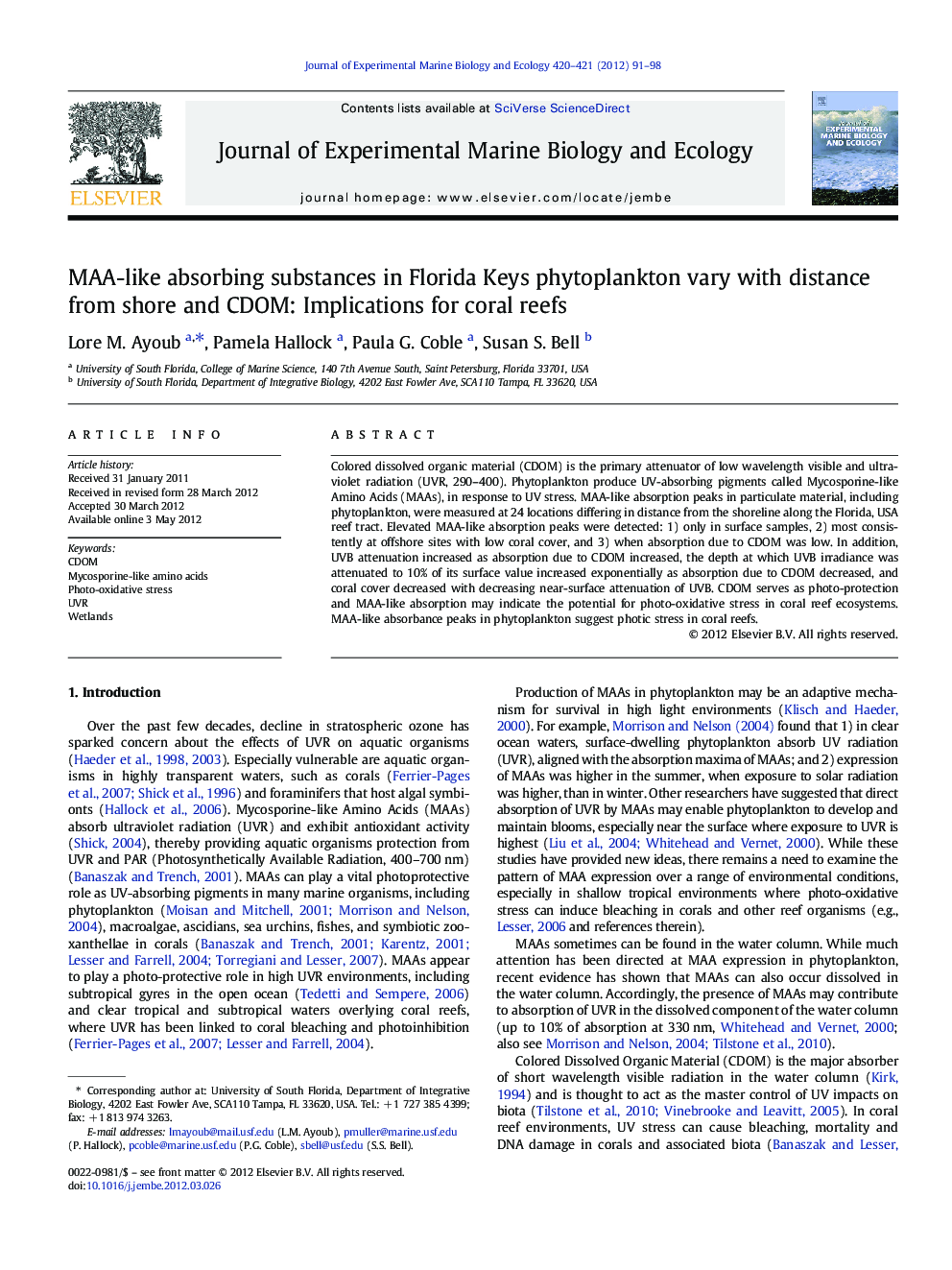| Article ID | Journal | Published Year | Pages | File Type |
|---|---|---|---|---|
| 4395984 | Journal of Experimental Marine Biology and Ecology | 2012 | 8 Pages |
Colored dissolved organic material (CDOM) is the primary attenuator of low wavelength visible and ultraviolet radiation (UVR, 290–400). Phytoplankton produce UV-absorbing pigments called Mycosporine-like Amino Acids (MAAs), in response to UV stress. MAA-like absorption peaks in particulate material, including phytoplankton, were measured at 24 locations differing in distance from the shoreline along the Florida, USA reef tract. Elevated MAA-like absorption peaks were detected: 1) only in surface samples, 2) most consistently at offshore sites with low coral cover, and 3) when absorption due to CDOM was low. In addition, UVB attenuation increased as absorption due to CDOM increased, the depth at which UVB irradiance was attenuated to 10% of its surface value increased exponentially as absorption due to CDOM decreased, and coral cover decreased with decreasing near-surface attenuation of UVB. CDOM serves as photo-protection and MAA-like absorption may indicate the potential for photo-oxidative stress in coral reef ecosystems. MAA-like absorbance peaks in phytoplankton suggest photic stress in coral reefs.
► Photo-oxidative stress on coral reefs includes supra-optimal solar radiation. ► Water column mycosporine-like amino acids (MAAs) likely indicates photic stress. ► Colored dissolved organic material (CDOM) preferentially absorbs UVR. ► MAA-like absorbance peaks in phytoplankton suggest photic stress in coral reefs.
